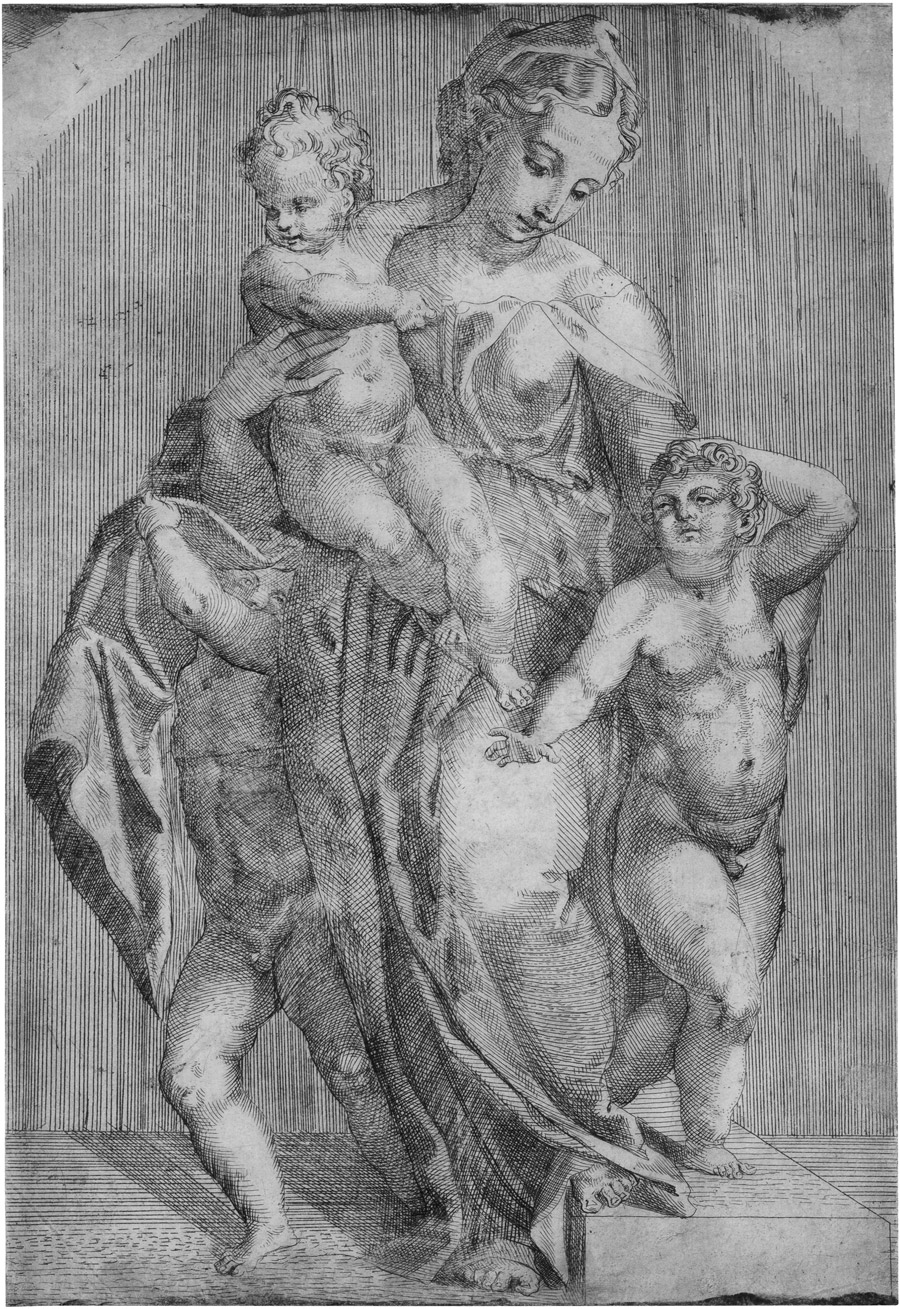Loading the page ...
Northern Italian School
c. 1550–1575
Caritas. Etching. 28.6 x 19.4 cm. Bartsch XVI (Maîtres Anonymes de l’École de Fontainebleau), 416, 102 II.
This rare etching was attributed by Bartsch to an anonymous master of the Fontainebleau School, although the stylistic treatment rather seems to indicate a North Italian, probably Veronese artist from the circle of Battista del Moro. The composition is dominated by the female figure of Caritas, whose sturdy, solid body looks almost statuesque and is placed before a semi-rounded background defined by dense parallel hatching. The heavy folds of her garment emphasize the powerful curve of the contrapposto. In her right arm the young woman carries a small child with curly hair. The boy on the right is about to free himself from her protective care, while a third is hiding under a tail of her robe. The group of figures seems compact and selfcontained and exudes a remarkable monumentality. The applied etching technique is appropriately simple and straightforward. The artist uses a transparent system of long vertical, parallel lines, simple cross-hatching, little strokes and dots in order to render the plastic volumes of the bodies, the materiality of the woman’s drapery and the different tonal values. The white paper tone has been cleverly used to achieve striking light effects.
In stylistic terms the present Allegory of Charity is strangely eclectic. The figure type of the naked boy on the arm of Caritas is reminiscent of Paolo Farinati, while the simple, rough etching technique has many analogies in the printed work of late Mannerist Veronese masters as Battista del Moro, his son Marco Angolo del Moro, and Angelo Falconetto. What we have here is a subtly differentiated and extremely heterogeneous style, whose unaffectedness and spontaneity show certain points of similarity with the innovative, roughly contemporary etchings of Bartolomeo Passarotti.
A very fine tonal impression of the partially uncleaned plate, minimally trimmed into the subject. Some minor defects, a few unobtrusive printer’s creases, otherwise in very good condition. On the verso an old (faded) inscription in pen: "Marco del Moro Veronese".
